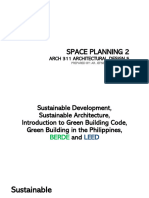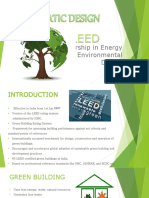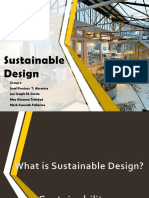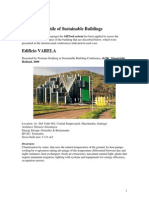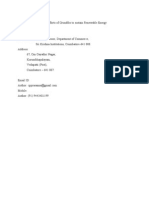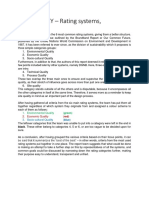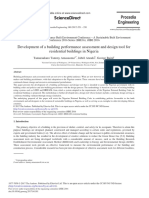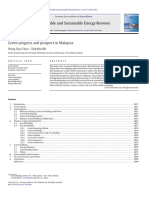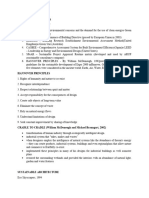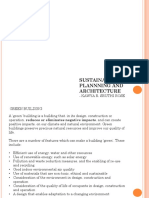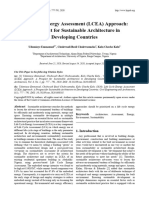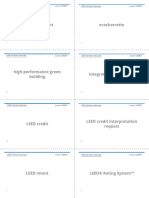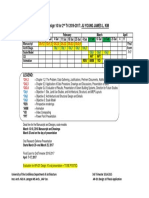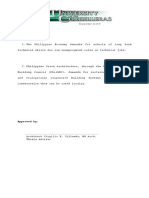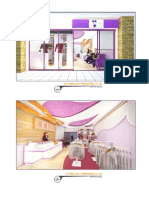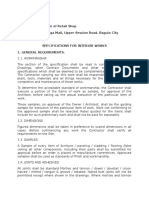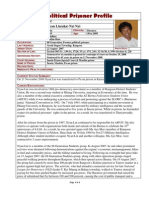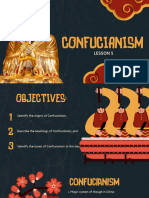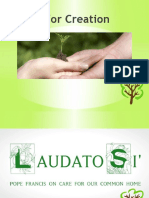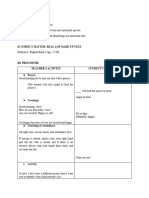Chapter 3
Results and Discussions
Visual Survey
In order to answer the statement of the problem and its
specific problems, the data gathering tool of visual survey has
been conducted. The following are the results of the analysis maps.
1. Sustainable, Resilient, and Responsive Building Systems
Design and Methods of Construction:
1.1 Readings
The study utilizes publications from laws, books,
articles, journals, and the world wide web related to
sustainable, resilient, and responsive building systems
design and construction methods as excerpted in the
related reading section of the thesis. Mainly, the
results for the process are:
1.1.1. The Building for Ecologically Responsive
Design Excellence for Educational Institutions
(BERDE 2013)
The BERDE Point System shall be used to gather data
on the criteria for sustainable, resilient, and
responsive building design systems in order to
evaluate and analyze the compliance of the site
location and to plan and design the Technological
Skills Institute as a green building. (see pages
27-71)
89
� 1.1.2. The National Ecolabelling Programme (NELP)
material specification for green buildings.
Material specification that are ecolabelled are
approved in the BERDE Point System Material section
and shall be used to specify construction
materials, equipment, and accessories to uplift
green architecture.
LIST OF ECO-LABELLED PRODUCTS
As deemed approved by BERDE and the National Ecolabelling
Programme (NELP)
A. WITH ACTIVE LICENSE
90
�91
�92
�WITH INACTIVE LICENSE
93
� (Design by RJ Villanueva)
94
� The National Ecolabelling Programme - Green
Choice Philippines (NELP-GCP) is one of the
country's initiatives to exercise the
fundamentals of sustainable development. It
aims to change the behavioral patterns in
consumption and production that tend to misuse,
abuse, and degrade our environment.
This voluntary third-party environmental declaration, which
is guided by principles and procedures of ISO 14024, gained its
legal footing when Republic Act 9003, "The Ecological Solid Waste
Management Act of 2000," was signed by Her Excellency President
Gloria Macapagal Arroyo. RA 9003 states under Article 4, Section
27 that "the Department of Trade and Industry shall formulate and
implement a coding system for packaging materials and products to
facilitate waste recycling and reuse".
NELP-GCP envisions that environment friendly products or
services are being produced and distributed in the country.
Ecolabelling and green purchasing, as fundamental tools in
influencing the patterns of production and consumption, must be
sustained as these are among the key steps towards the path of
green business practices. (National Ecolabelling Programme - Green
Choice Philippines 2013)
1.2 Observation
Ocular site inspections and documentation are
translated into visual surveys known as analysis maps.
These are:
95
� 1.2.1. Analysis Maps
Figure 3. Base map (showing existing site conditions)
Figure 4. Sun and Wind Path
96
�Figure 5. Topographical map (showing site contour and slope)
Figure 6. Hydrological and Vegetation Map
97
�Figure 7. SWOT analysis (Strength, Weakness, Opportunities, and
Threats)
98
� BIBLIOGRAPHY
BOOKS
1. PhilGBC. (2013). BERDE for New Construction Educational
Institutions. BERDE-NC-EDU v.1.1.0. Philippine Green Building
Council
2. Ragheb, A. et. al. (2016). Green Architecture: A Concept
of Sustainability. Procedia - Social and Behavioral Sciences.
Elsevier
3. Technical Education and Skills Development Authority. (1998).
Installing a Quality-Assured Technical Education and Skills Development
(TESDA) System. 1998 TESDA Transition Report.
4. Di Gropello, E., H. Tan and P. Tandon (2010) Skills for the
Labor Market in the Philippines. The World Bank.
5. Lanzona (2008) “Technical and Vocational Education and Training
in the Philippines.” Background report prepared for the WB.
6. IAC Publishing Labs (2016) “What are some problems facing
vocational and technical education in Nigeria?” IAC Publishing Labs
Company
7. Rebeccac (2011) Comparing Types of Colleges: The Pros and Cons
of Technical Schools. US College Search
8. Peluffo, Matias. (2015) Defining Today’s Intelligent Building.
Commscope
TESDA Board Resolutions
9. TESDA (2006). TESDA Board Resolution No. 2005-18, Approving the
Provisional Assessment Fees By Qualification.
10. TESDA (2003). TESDA Board Resolution No. 2003-05, Adoption of
the Philippine TVET Qualifications Framework.
99
� 11. TESDA (1998). TESDA Board Resolution No. 1998-01, Installing a
Quality-Assured TESDA System.
ARTICLES/JOURNALS
12. M. Montavon. (2010). Optimization of Urban Form by the
Evaluation of the Solar Potential, EPFL. -retrieved on September
23, 2016 from www.EPFL.com/UrbanForms
13. M. DeKay & G.Z. Brown. (2014). Sun Wind & Light,
architectural design strategies, 3rd ed. Wiley. -retrieved on
September 23, 2016 from www.Wiley.edu/sun-win-light
Related Studies
14. TESDA. (1998) Installing a Quality-Assured Technical
Education and Skills Development (TESDA) System. TESDA Transition
Report.
15. Di Gropello, et. al. (2010) Skills for the Labor Market in
the Philippines. The World Bank.
16. Lanzona (2008) “Technical and Vocational Education and
Training in the Philippines.” Background report prepared for the WB.
17. IAC Publishing Labs (2016) “What are some problems facing
vocational and technical education in Nigeria?” IAC Publishing Labs
Company
18. Rebeccac (2011) Comparing Types of Colleges: The Pros and
Cons of Technical Schools. US College Search
19. Peluffo, M. (2015) Defining Today’s Intelligent Building.
Commscope
100



